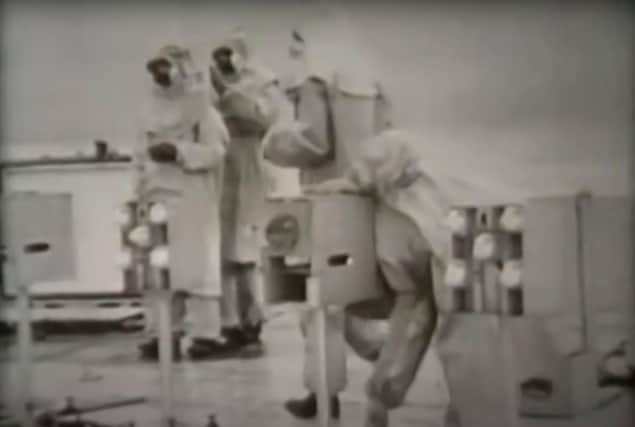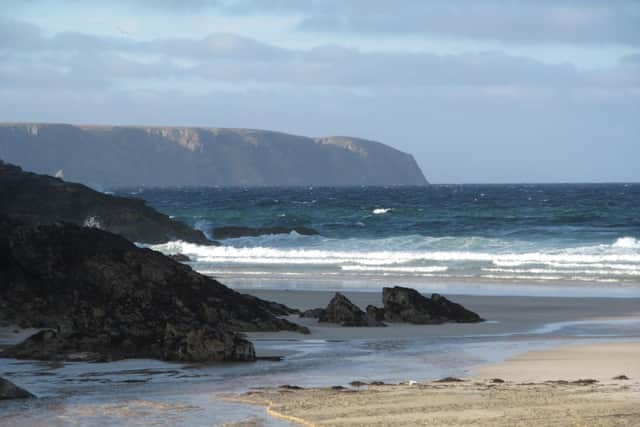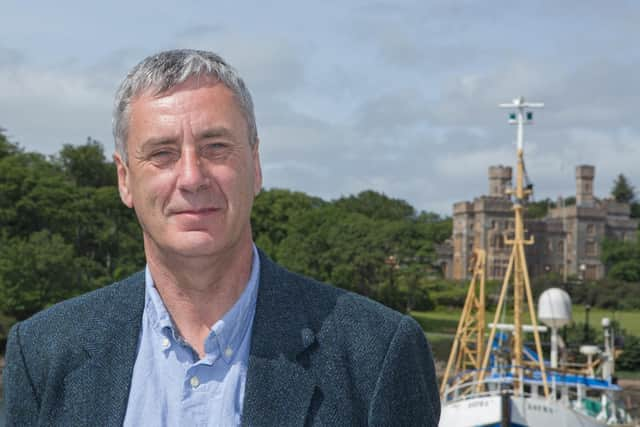Schoolboy memories of monkey and guinea pig experiments off Scottish island recalled


The recollections of Operation Cauldron come as a new novel set against the backdrop of the experiments, which unfolded in the waters off Tolsta Bay on the island’s east coast, is due to be published next month.
Biological bombs, containing agents such as the bubonic plague and brucellosis, were set off by scientists in westerly winds with clouds of the disease then passing over the animals lined up in cages on a pontoon.
Advertisement
Hide AdAdvertisement
Hide AdAround 2,400 guinea pigs and 100 monkeys were used in the experiments, which were designed to establish antidotes as interest in biological warfare peaked in face of the Cold War.


Donald Murray, 81, a retired physics teachers, was 13 years old when the ship Ben Lomond arrived off the coast near his home. He remembers clearly seeing the scientists at work as he played and fished on the beach.
Mr Murray said: “You could look straight out at it. You could see all the activity when the scientists took the animals out to the deck . They used to set the monkeys out in a row.
"The boat would clear away and you would see the flash first as they exploded the gas and then you would hear the bang.
"You would then see the gas drifting away over the pontoon.”


People were told not to venture onto the cliffs at Tolsta with fishing boats also stopped going in and out of the village.
Mr Murray recalled plenty of fish for his and his friends to catch on their lines as a result. Sailors on the Ben Lomond would come onto the beach on a Sunday to relax on the sands, he added.
Mr Murray said there was “no fuss at all” about the experiments taking place off the island.
Advertisement
Hide AdAdvertisement
Hide AdHe added: “My father had been in both World Wars and his view was ‘the Navy knows what it is doing’.
"The navy wasn’t testing it to use on other people – they were testing to find the antidote.
"We were well aware there was testing. We knew they were testing animals. You can’t have any secrets on Lewis and there is no such thing as ‘Top Secret’ on Lewis .”
Operation Cauldron lingered long in the memory of islanders with stories passed on about the trials through time.
Author Donald S Murray, who grew up on Lewis, is set to publish In A Veil of Mist next month, with his novel using Operation Cauldron as way of looking at hidden histories and the power of tales left untold. A fair bit of romance also features.
Mr Murray, now of Shetland, recalled the "schoolboy gossip” surrounding the experiments.
As the nature of the trials remained secretive to most islanders, unchecked truths were left to percolate over time.
The seeds of the novel had long been planted in the mind of young Murray, who stayed in a hostel in Stornoway during the week so he could attend the island’s secondary school, The Nicolson Institute, where he would later become a highly-respected English teacher.
Advertisement
Hide AdAdvertisement
Hide AdMr Murray said: “There would be stories at the back of the bus about the experiment...more myths and whispers than anything. There were a lot of half truths going around which would be impossible to prove now.
"Then later I read a story about someone who had been on the boat being involved in a breach of the peace in Stornoway. It reinforced those memories. It is fair to say that this book has been brewing in my head for a long time.”
Details of Operation Cauldron were only really made public in the 1980s when the Observer newspaper published the only file on the operation which had not been destroyed.
Parliamentary questions had earlier been asked by former MP for the Western Isles, Donald Stewart and by his successor Calum Macdonald.
Calls for a public inquiry were turned down by Defence Secretary Malcolm Rifkind in 1994.
The only real breakthrough came when the Ministry of Defence was ordered by the Information Commissioner to release a 48-minute film made at the time of Operation Cauldron.
After the animals had been exposed to diseases, they were taken back to the on-ship laboratory for assessment or post mortem, with those who died later burned.
The experiments, which were conducted in conjuction with the US and Canada and which were also held in the Bahamas, were ultimately deemed to be a failure.
Advertisement
Hide AdAdvertisement
Hide AdHowever, major panic erupted in government and naval offices after a Lancashire-based trawler defied shipping restrictions sailed through a cloud of biological agent.
According to accounts, the crew, from Fleetwood, went back to shore as normal but were put under government surveillance for two weeks as they went about their daily business.
The men remained unaware of what had happened until they were approached by a BBC crew decades later with information about the risk they had been exposed to.
Mr Murray said : "I think we have to remember the context of the time . We would judge this behaviour very harshly but then you are talking about Hiroshima, Nagasaki...islanders may have perhaps knowingly turned their head away.
"You can take it out of all historic context and we think it is indefensible. But in the context of time, it was perhaps more understandable.”
In A Veil of Mist is published by Saraband on March 18.
A message from the Editor:
Thank you for reading this article. We're more reliant on your support than ever as the shift in consumer habits brought about by Coronavirus impacts our advertisers.
If you haven't already, please consider supporting our trusted, fact-checked journalism by taking out a digital subscription.